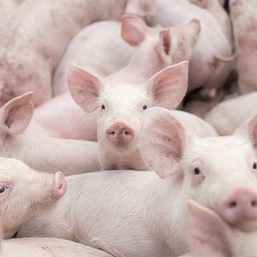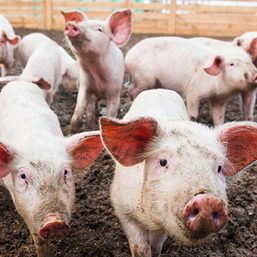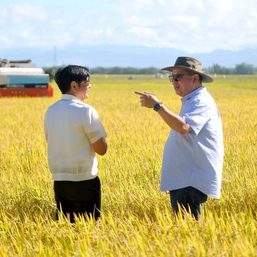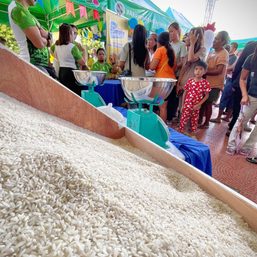SUMMARY
This is AI generated summarization, which may have errors. For context, always refer to the full article.
![[Vantage Point] Price control: The magic wand that does not work](https://www.rappler.com/tachyon/2023/09/20230919-magic-wand-doesnt-work.jpg)
Importation is the wrong prescription for the disease that ails Philippine agriculture. But that’s all the medicine President Ferdinand Marcos Jr. can find in his public health arsenal.
To be fair to Marcos, it is his predecessor President Rodrigo Duterte who brought us all to this point. At his behest, Congress passed the Rice Tariffication Law in February 2019, supposedly to stem the increase of prices of the prime commodity. The prices per kilo of rice had hit P50 or thereabouts, a 14% increase over the previous year.
The rationale was, on its face, the best option. Import control is bad, while liberalization – which involves opening the floodgates to unrestricted entry of the commodity – will bring prices down. Import of the commodity went up as a result, from 2 million metric tons to 3.17 million metric tons.
The commodity became widely available, thereby staving off hunger, but the prices remained the same. They have even risen since then. Of course, at that time, Duterte couldn’t just let the Filipinos starve, or they’d entertain the funny idea of overthrowing him and his cohorts – a sentiment he must have sensed – which was why he had warned the nation that President Xi Jinping and the Chinese Communist Party would not allow his ouster.
Maybe Sara Duterte should red-tag her father instead of congresswoman France Castro, who gets into her skin because she is asking her to explain where she intends to spend the confidential funds she has requested for her offices as Vice President and Education secretary, which amount to P500 million and P150 million, respectively.
What really ails the agri sector?
In any case, as previously asserted, importation is the wrong medicine. What should have been done was strengthen agriculture, and that included subsidizing rice production. Alas, Duterte was hostile to the idea. His agriculture secretary, Emmanuel Piñol, adopted, no doubt upon Duterte’s order, a policy that relegated rice production to the bottom of the administration’s economic priority. Perhaps, to the then-president’s and then-agriculture chief’s way of thinking, rice farming was a losing proposition. The nation was better off growing high-value crops for export: bananas and other tropical fruits, cut flowers and ornamental plants, coffee, etc.
The proposal was readily embraced by Senator Cynthia Villar, who chimed in that Filipino rice farmers are inefficient, maybe even lazy, observing that their cost of production is much higher than their Thai, Vietnamese, and Cambodian counterparts. That is true, but she forgot to mention the fact, or perhaps she did not know, that those countries have the Mekong River as an inexhaustible source of water, which rice plants need in volume greater than all other crops.
A week or so ago, Senator Raffy Tulfo conducted an investigation into the corruption at the National Irrigation Administration (NIA). It turned out that the agency has very little to show for the billions of country’s irrigation systems, a common occurrence from one Philippine president to another.
To circle back to Senator Villar, the woman has a wager on the table, so she is not exactly the font of wisdom on this matter. She is in the business of converting agricultural land into residential lots that her family corporation sells to overseas Filipino workers (OFWs). Land development is the primary source of her family’s multi-billion dollar fortune.
Traders are not altruists
President Marcos Jr. may not have caused the crisis, but he has certainly made it worse. Now he is turning the screw even tighter. Department of Finance (DOF) Secretary Benjamin Diokno and National Economic Development Authority (NEDA) Director-General Arsenio Balisacan are paving the way for the reduction of rice import tariffs. The Federation of Free Farmers (FFF) suspects that the two government officials will do away with the tariffs outright if nobody’s watching, and they will cite the noblest of purposes to justify the scheme: cheaper rice in the market.
It never works that way, unfortunately. Traders do not sell the commodity for a price lower than what is prevailing in the market, and it doesn’t matter how cheap they buy the commodity. They’re in the business to make money, not to ease the difficulties of the consuming public. The tariffs collected are the source of funds for the Rice Competitiveness Enhancement Fund (RCEF).
So far around P1.7 billion has been collected, against a target at this time of P1 billion. Are these funds working in the most efficient and effective way to improve rice production proficiency? That is not assured, and most likely will not happen. Will the government make public the recent performance evaluation made by the RCEF that was prepared by International Rice Research Institute (IRRI)?
A few days ago, the US Department of Agriculture announced that the Philippines will overtake China as the world’s biggest importer of rice. It said in the marketing year 2023-2024, the Philippines is set to increase import to 3.8 million metric tons to feed its burgeoning population. For the same period, China’s import of the commodity will have dropped to 3.4 million metric tons. These are jaw-dropping figures if one compares the population sizes of the two countries: 108 million for the Philippines and 1.5 billion for China.
Threat of famine
What all that means is that we’re facing the specter of famine, the like of which we have never experienced before. The erratic weather pattern could affect food production even in countries with robust government support, and when that happens the Philippines would be left holding an empty begging bowl.
President Benigno Aquino III and all his predecessors, including Joseph “Erap” Estrada and Gloria Macapagal Arroyo, strove mightily to achieve rice self-sufficiency. They failed, but that was no reason to give up rice production altogether. Duterte’s proposal to do just that, it seems, is low-intensity genocide and a total disregard for human life. At present, he is under investigation for ordering the murders of 30,000 men, women, and children on the pretext that the country must rid itself of drug addicts and criminals.
Unlike Duterte, Marcos Jr., to use a slang phrase, does not “paint a house.” He has however like his predecessor abdicated his responsibility to the Filipino people, as far as food security is concerned. According to the same USDA report, the Philippines is waiting for rice prices to drop in the world market before placing its orders. That, of course, is the country’s prerogative as a buyer, but what happens if the prices go up instead of down? Well, when that happens, we’ll just have to bite the bullet.
Falling harvests
But that is not the worst-case scenario the country must brace itself against. As suggested a while back, harvest could fail in Thailand, Vietnam, Cambodia, and other rice-exporting countries. In such a case, these countries will ban export of the precious commodity to ensure the survival of their own people.
What will the Philippines do? This early, newspaper reports have it that the country is already looking far afield, to Argentina for instance, for its import needs. The Philippines has always imported rice, but only to make up for a production shortfall. To depend on import to survive is dangerous, even if the import constitutes only 20% of the staple the country needs to feed itself, which is the case at present.
If the government does not change course, the deficit will worsen over time. The specter of a widespread famine is a real possibility, thanks to the incompetence, short-sightedness, and indifference of the country’s leaders.
President Marcos just cannot order a price cap either, as he lamely tried to do for a few days. If he had that power, why confine its use to rice? Why not extend it to meat and poultry, fruits and vegetables, fish and other marine products? Price caps are utterly market-distorting and not supported by historical stats. They lead numerous secondary consequences, as seen with the near immediate call for compensation by both traders and farmers. A far more effective use of financial resources when rice prices are skyrocketing would be to provide additional financial support under the Pantawid Pamilyang Pilipino Program (PPPP) during such periods.
A price cap, again? We’ve seen it all before. Remember the infamous Oil Price Stabilization Fund (OPSF)? This was a scheme concocted by President Ferdinand Marcos Sr. when he tried to rein in the price of oil through a fiat and used a price stabilization fund to smoothen the price.
First created in 1971 during Marcos Sr.’s administration, the special fund was eventually renamed OPSF in 1984 under Republic Act (RA) 6173 by the defunct Oil Industry Commission.
Under RA 6173, the OPSF was sourced from fuel taxes and used to reimburse oil companies for cost increases on crude oil and imported petroleum products, resulting from exchange rate adjustment and/or increase in world market prices of crude oil. The fund was eventually abolished when mismatches between payments to the fund and claims against it were discovered.
Aside from these discrepancies, policymakers also lacked the discipline to adhere to the price stabilization purpose of the OPSF. Thy did not implement the increase in the regulated price when the magnitude was large. They allowed the fund to be used for something not directly related to price stabilization. Is it any wonder then that the fund would become insolvent?
This just shows that it is always dangerous to assault the free market regime.
Price cap? No, that is a magic wand that does not work. – Rappler.com
Val A. Villanueva is a veteran business journalist. He was a former business editor of the Philippine Star and the Gokongwei-owned Manila Times. For comments, suggestions email him at mvala.v@gmail.com.
1 comment
How does this make you feel?







![[ANALYSIS] A post mortem on the rice price ceiling](https://www.rappler.com/tachyon/2023/10/tl-riceceiling.jpg?resize=257%2C257&crop=245px%2C0px%2C720px%2C720px)
![[EDITORIAL] Talagang ‘ibang usapin ang bigas’](https://www.rappler.com/tachyon/2023/10/animated-rice-inflation-bbm-carousel.jpg?resize=257%2C257&crop_strategy=attention)



![[Just Saying] SONA 2024: Some disturbing points](https://www.rappler.com/tachyon/2024/07/TL-marcos-sona-points-july-23-2024.jpg?resize=257%2C257&crop=335px%2C0px%2C720px%2C720px)



![[ANALYSIS] How one company boosts farmer productivity inside the farm gate](https://www.rappler.com/tachyon/2024/06/bioprime-farmgate-farmer-productivity-boost.jpg?resize=257%2C257&crop=465px%2C0px%2C1080px%2C1080px)


![[ANALYSIS] The department of ambivalent, if not ambiguous agriculture](https://www.rappler.com/tachyon/2024/05/department-of-ambivalent-05252024.jpg?resize=257%2C257&crop=279px%2C0px%2C720px%2C720px)
![[In This Economy] Why amending the Rice Tariffication Law will reopen Pandora’s box](https://www.rappler.com/tachyon/2024/05/amending-rice-tarrification-may-17-2024.jpg?resize=257%2C257&crop=583px%2C0px%2C1080px%2C1080px)
Thanks to Val A. Villanueva for an enlightening article on the recent Rice Price Control Policy of the Marcos Jr. Administration. He has shown that ever since Marcos Sr. implemented such policy – it did not work. He also made special mention of the “wisdom” of Senator Cynthia Villar on the issue of rice production policy. Then comes “importation” which is the “wrong prescription” and the “only” medicine that President Marcos Jr. can find. Perhaps, importation is not only – the only medicine for the Rice Price issue but the “best” medicine ever since Former President Duterte became fond of it. Why? It makes Presidential Relatives and Presidential Campaign Fund Donors who are into agricultural products trading, especially rice, happy!